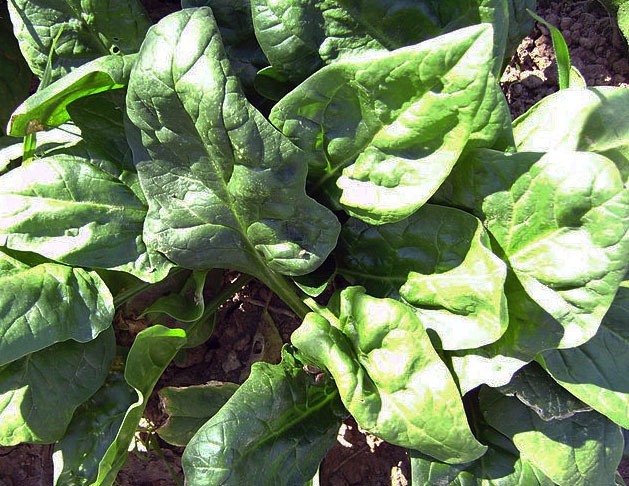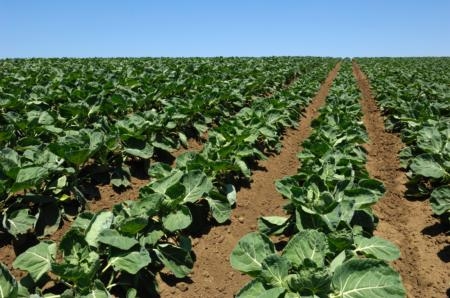Posts Tagged: spinach
UC Cooperative Extension advisors help spinach growers finesse fertilizer applications
UC Cooperative Extension advisors are studying the critical balance between fertilizer application and absorption in Salinas Valley spinach crops to help farmers meet new water regulations, reported Dennis Taylor in the Salinas Californian.
Richard Smith and Michael Cahn, UCCE advisors for Monterey and other Central Coast counties, have been conducting field trials for several years to determine volume data on fertilizer application. Once growers know exactly how much nitrogen their crop is absorbing, they can more precisely apply an appropriate amount.
Smith explained that baby spinach will absorb roughly 80 percent of the nitrogen it is going to take up in the final two weeks before harvest, making timing critical, Taylor reported. Spinach harvested a few days later, called "teen spinach" uses about 100 pounds of nitrogen per acre; larger-leafed spinach can used up to 120 pounds.
“No (previous) studies had evaluated high-density planting of clipped or bunched spinach grown on 80-inch beds,” said UCCE research assistant Aaron Heinrich. “Our study was specifically designed to provide data on the nitrogen uptake characteristics of spinach and to evaluate ways to improve nitrogen fertilizer management.”
Spinach safer five years after E. coli outbreak
Salinas Californian reporter Andy Stiny wrote a story on the 5th anniversary of the E. coli outbreak in spinach grown in San Benito County. He reported that Steve Koike, plant pathology farm advisor for Monterey County, said California's spinach industry is rebounding from the setback. Bonnie Fernandez-Fenaroli, executive director for the Center for Produce Safety at UC Davis, is quoted as saying, "A lot of research is going into all produce right now." The center has 54 produce safety projects under way. Christine Bruhn, a food marketing specialist and director of the Center for Consumer Research at UC Davis, said recent surveys show consumers are more concerned about meat products but 30 percent said they are concerned about produce safety. "We advise people to wash their sink and their hands, then wash produce in running water and dry with a clean paper towel," Bruhn told the reporter. "This reduces but does not eliminate bacteria."
UC Berkeley professor appointed to systemwide position
Sybil Lewis, The Daily Californian
UC Berkeley professor Barbara Allen-Diaz has been appointed University of California systemwide vice president for Agriculture and Natural Resources, reports the Daily Californian, the UC Berkeley student newspaper.
UC food safety research on the national news
Last Saturday night, the CBS Evening News aired a six-minute special report on food safety. The research component for the story featured an appearance by UC Davis Cooperative Extension food safety specialist Linda Harris, in which she explained work underway to understand the potential food safety impact of irrigation practices on leafy green vegetables.
Reporter Bill Witaker noted that cutting edge research is being conducted around the country to find out how pathogens make it onto fresh produce and how to reduce the risk. He used the UC Davis Center for Produce Safety as a case in point.
Interviewed inside her lab, Harris told Whitaker the effectiveness of her work is "hard to prove, it's hard to measure, but I really think we do make a difference."
UC research isn't confined to laboratories. Three UC Cooperative Extension farm advisors in Monterey County - Steve Koike, Richard Smith and Michael Cahn - are working with campus-based researchers to determine the ability of the deadly E. coli 0157:H7 to survive in the field.
They reported in UC Delivers that they used harmless E. coli as surrogate organisms to evaluate how variations in soil moisture and environmental conditions impact the organism's survival in soil, water and on plant surfaces. In addition, experiments on E. coli source-tracking, detection technologies and field ecology are being conducted to gather information from an environment that reflects the actual farming conditions of the local agricultural industry.

UC scientists are helping protect the safety of the U.S. food supply.


